Inurri lagun
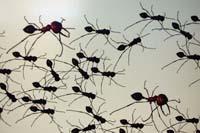
The possibility of many living beings is collaboration, rather than being prey to another species, to cooperate. Shark and rosemary, a fish that walks behind almost glued to the shark, are neither predators nor predators, have taken the path of facilitating their life and therefore live together. They live in symbiosis because it is a relationship that benefits both. Rosemary cleans the shark and in return does not lack food next to it.
Both species provide mutual benefits, forming a kind of association. Such relationships are not "convinced" overnight, one species does not suddenly abandon the capture of another. For biologists it is the result of a long road in evolution.
Adaptation to mutual benefit not only occurs in raptor couples, but has also evolved into seemingly independent couples. Moreover, symbiosis may have three or more participants. These examples are seen in ants.
The collaboration of Cologne
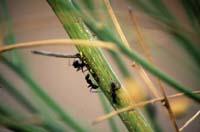
Living in symbiosis with ants seems like a great advantage, as they are famous for being good workers. When they find the food they do not consume it immediately, but they take it to the anthill and keep it. In difficult times, the worker ant will eat what is kept. However, the strength of ants is not to work much, but to be part of an anthill. It is a social animal that brings more advantages to work for the team. In exchange for work, the team ensures protection and food to all ants in the colony. From a broader point of view, the anthill itself behaves as one living being, allowing ants to live in symbiosis with other living beings. Somehow, all the anthill has symbiosis with other species.
It is a very varied symbiosis. One of the simplest is the relationship of ants with aphids, plant lice. The aphids secrete a liquid called honey junk, the carpenter ants collect the dew of honey and in return protect the aphids from predators. It is, in short, a type of livestock. And it is not the only livestock that ants make. Myrmecophilous caterpillars are also cared for by honey dew, as they are introduced at night into the anthill.
Ants are not only farmers, but farmers through a symbiosis. Attini ants, like leaf-cutters, "breed" fungi.
They take them to an appropriate place where they reproduce them. Ants completely control the process, total control has great advantages but also poses problems.
As the entire colony grows from a single fungus, all specimens are clones of the first, which is an advantage, since they are clones chosen by ants. However, the presence of clones can cause a genetic disease that affects all individuals, so ants make great efforts to control diseases. They carry certain bacteria and yeasts, as they secrete antibiotics and various enzymes. It is a health service or, at least, a set of resources against pests similar to that used by man in agriculture.

There are more examples of symbiosis in the world of ants, such as anthills. In Costa Rica, ants have symbiosis with jumping spider. The spider protects the anthill and, in return, lives inside it.
Symbiosis limit
Little by little, biologists have been discovering all these types of symbiosis and many others. Surely there will be many other types of symbiosis. In any case, these types of elements express well the flexibility of the world of ants. They are farmers and ranchers, maintain a symbiotic relationship with plants and animals, some of which may be potential ant predators. Is any other living being worth? Where is the capacity limit of ants symbiosis?
The size of the other alive is no limit. On the one hand, it lives in symbiosis with the smallest, microorganisms. Care for fungi and microorganisms also benefit from this situation. On the other hand, ants have symbiosis with larger living beings, such as acacias. Although one is very large and the other is very small --a tree and an ant -, they live in symbiosis, since all the anthill participates in it.
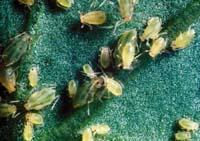
Perhaps the ecosystem is a frontier of ants symbiosis. But the problem is not, in itself, whether or not the ecosystem is suitable for symbiosis, but whether or not ants can live in it. And can ants live everywhere? Whether in warm, cold or dry or humid ecosystems?
Great colonizers
The truth is that they live almost everywhere. Most ants live near the equator, as they are cold-blooded animals. They should heat the body so that the metabolism works at a proper speed. Therefore, in some ecosystems it will be more difficult to live, for example in areas that are subjected to ice. In fact, areas where soil freezes in winter are limits for some species of ants. But not for all species, several species have been adapted to live in such places. Not at the poles, but in Northern Europe, Siberia and Canada, for example. Ants can therefore also live in cold ecosystems. They live in cold places and symbiosis.
It seems that the adaptation capacity of ants is total, but it is not true. The residential environment is a limit for ants. They cannot live in the water. Reason is physical, for them it is impossible to dive into water. For a large animal the water is liquid and crossing the surface is not an obstacle. But for small animals, such as ants, the water surface is a barrier that is very difficult for them to cross, both to enter the water and to leave the water. Within a drop of water, an ant is trapped without being able to leave.
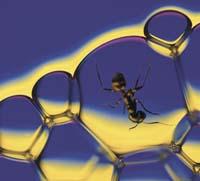
Remote contact
There is a close relationship between underwater and underwater ecosystems. Not directly a fish and an ant, but yes through other species. For example, a species that eats ants (or eats ants) may be the medium in that relationship, like an amphibian. But are we not talking about symbiosis? It is clear that ants and an anteater amphibian do not live in symbiosis.
However, from a general standpoint, the predator-prey relationship can also be considered symbiosis. The predator makes the prey population not increase too much. In addition, the relationship of the couple cannot be separated from other relationships, but affects the entire ecosystem, among other things because predators of one species are also prey to another and because each predator has many prey. Balance is complex.
In short, the ecosystem must be analyzed from a global perspective. In the case of the ant, to understand various symbiosis one cannot analyze a single specimen, but all the anthill. Likewise, to understand the relationship between ecosystems it is necessary to consider the set of all living beings. Thus, the entire ecosystem is the set of many species living in symbiosis. All species have symbiosis with all others.
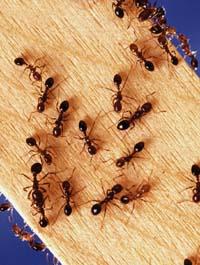
It is not a new concept. The concept was developed by the British James Lovelock in 1980, whom he called the Gaia hypothesis. By then it was not even a new concept; in many ancient societies the concept had been accepted, for example, among the Indians of North America: nature is a great living and all species are part of it, including man.
This means the relationship between ants and fish, for example. It is not a 'private' symbiosis, but an indispensable part of a great balance.






